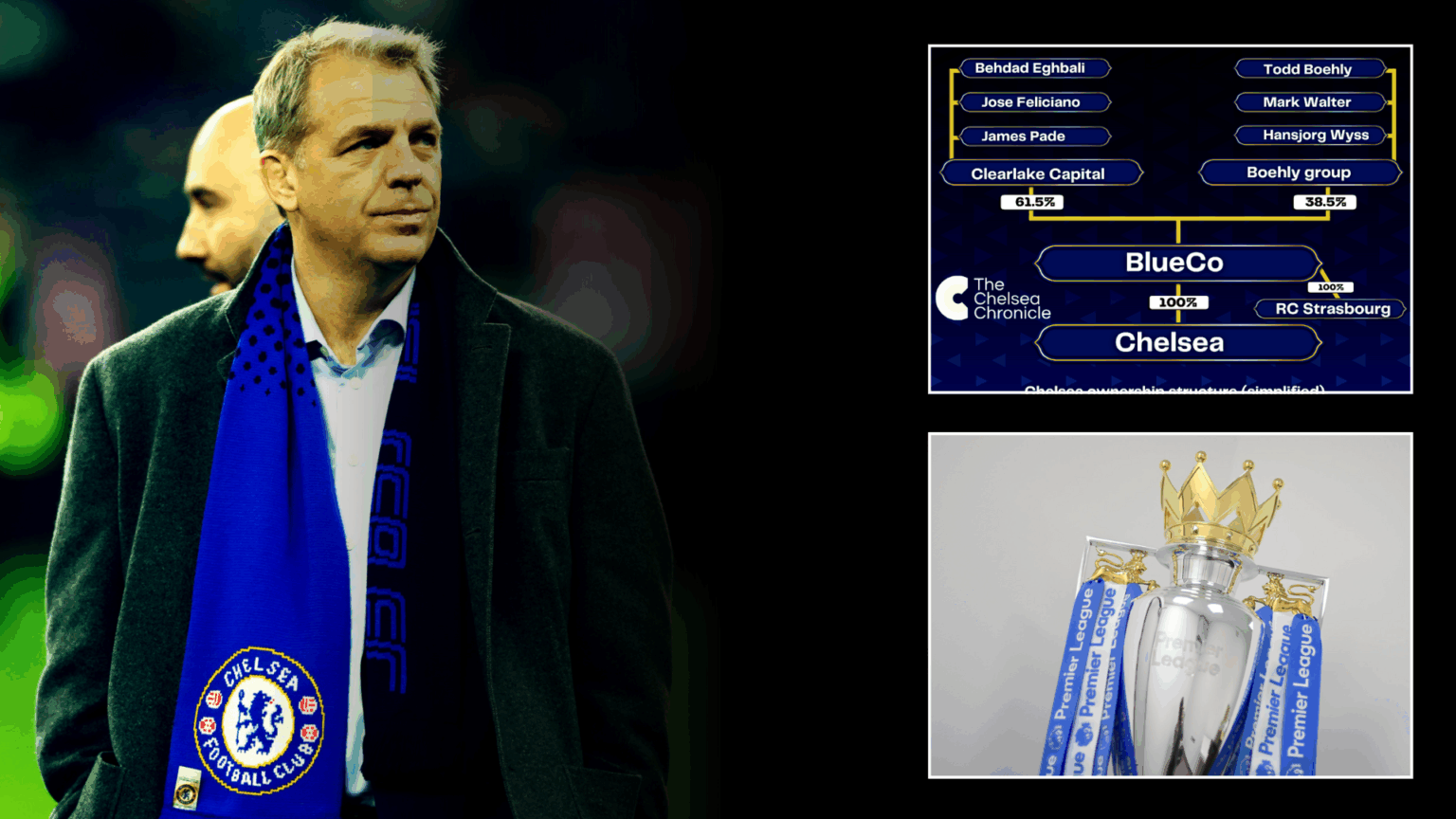It has been a good few weeks for Todd Boehly, who will feel that Champions League qualification and the Europa Conference League crown validate his and Clearlake’s Chelsea business model.
Not to denigrate the achievements of Enzo Maresca’s side who were superb in the second half against Real Betis in mid-week but when BlueCo bought Chelsea three years ago, they had their sights set higher than the junior UEFA competition.
But Todd Boehly and Behdad Eghbali were clear that this was never a win-now project. The two men made their billions in the private equity racket, where investors expect a return in five to seven-year cycles. At Stamford Bridge, it’s going to take far longer than that.
Credit: Adam Williams/GRV Media/The Chelsea Chronicle
That much is evident in the contract structure the American owners have implemented. Chelsea players collectively are contracted to the club for literally hundreds of years. The Blues have made the six, seven, eight, even nine-year deal their calling card.
The aim is to lock in market value and foster buy-in from the young squad. Similarly, Boehly has said that the redevelopment of Stamford Bridge or move to a new stadium might not be complete for 15-20 years. These are guys who are used to dealing in almost cosmic timescales.
But to eventually get to a point where they are able to generate a return on their £4.25bn investment – £2.5bn takeover price plus £1.75bn spending commitment – there will need to be major structural changes both in SW16 and in football’s wider financial ecosystem.
At the moment, when you strip out one-off intra company sales like the two hotels at Stamford Bridge and the women’s team, the business is generating cash losses far bigger than anything in the Roman Abramovich era which, as you’ll remember, wasn’t exactly spendthrift.
Todd Boehly wants fewer Chelsea matches – but how?
For Boehly and Eghbali to walk away from Chelsea with a profit, one of two things needs to happen:
- They sell the club for more than they paid and have subsequently invested
- Chelsea become consistently profitable enough that they can start taking regular and huge dividends
Given the timescale in which Clearlake’s investors want a return, it seems like the first option is more likely. But really, it’s immaterial. Either way, you need to demonstrate that the club’s future cash flows exceed its costs. Otherwise, who is going to buy it for more than £4.25bn?
So BlueCo need to cut costs, increase revenues or a combination of the two.
Credit: Adam William/The Chelsea Chronicle/GRV Media
One solution among owners looking to increase the slice of the pie has been to simply organise more matches. The expanded Champions League format, for example.
But interestingly, Boehly recently said that he thinks there are too many matches in the football calendar.
“The challenge we really have is how many matches these guys are playing,” he told Bloomberg.
“The calendar’s really tight and they put in so much effort and energy, and the injuries are continuing to go up and up and up.
“We’re going to have to revisit what the calendar looks like and how much football they can actually play.”
On face value, this might seem a counterintuitive statement from a man who needs Chelsea’s revenue to increase to realise his business objectives.
That’s before you examine the fact that Boehly is taking his club to the Club World Cup, where they could play up to seven more gruelling post-season matches.
| Team 1 | Team 2 | Team 3 | Team 4 | |
| Group A | Palmeiras | FC Porto | Al-Ahly | Inter Miami |
| Group B | Paris Saint-Germain | Atlético Madrid | Botafogo | Seattle Sounders |
| Group C | Bayern Munich | Auckland City | Boca Juniors | Benfica |
| Group D | Flamengo | Espérance Sportive de Tunisie | Chelsea | Club León |
| Group E | River Plate | Urawa Red Diamonds | Monterrey | Inter Milan |
| Group F | Fluminense | Borussia Dortmund | Ulsan | Mamelodi Sundowns |
| Group G | Manchester City | Wydad | Al-Ain | Juventus |
| Group H | Real Madrid | Al-Hilal | Pachuca | RB Salzburg |
But, as University of Liverpool football finance lecturer Kieran Maguire highlights in exclusive conversation with The Chelsea Chronicle, it’s not the number of matches you play, it’s the quality.
“Boehly isn’t interested in football, he’s interested in yield per customer,” said the Price of Football podcast host.
“How do you maximise yield per customer? You have as many A-grade events as you can.
“Bournemouth at 12.30pm on a Saturday isn’t good for yield. It also means you have to have a large squad to have to deal with the Wednesday-Saturday cycle.
“There is a case for saying, if you reduce the size of the Premier League, yes, you’ll lose two home fixtures for good, but you can probably afford to lose two or three senior squad members because there are fewer physical demands.”
Maguire is referencing Project Big Picture, the restructuring of English football proposed by Manchester United, Liverpool and the EFL in 2020 which would have seen the Premier League reduced to 18 teams.
“In any case, there wouldn’t be fewer fixtures. Chelsea are all-in as far as the Club World Cup is concerned. What a truncated Premier League season would allow for, however, is a longer pre and post-season tour.
“Boehly is in favour of Super League too, of course. If you look at his previous comments, he’s been clever. He’s said they’re not in a position to be in favour of it. That’s not the same as not being in favour at all.”
